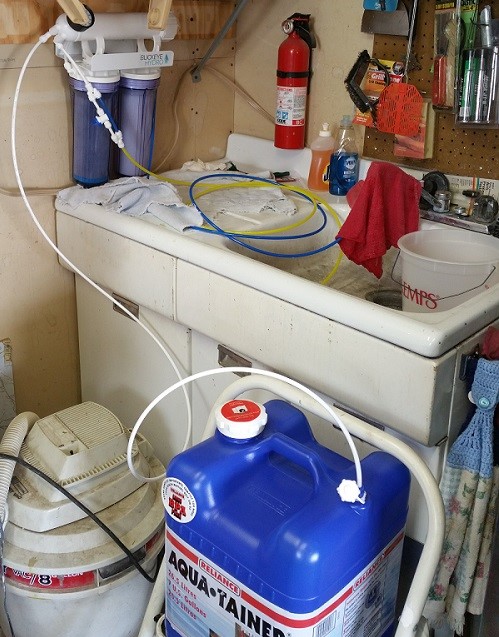I’m considering ordering a RO Buddie system from amazon... the relatively low cost seems to make sense vs buying distilled water and building a profile.
I’m curious, though, since when you research you don’t seem to get any reputable answers (only marketing-heavy opinions of RO vs Distilled...): is there any downside to RO water?
One thing that keeps coming up is bacteria or bio-film in the lines... I know the boil will take care of that, but I’d likely use the system for Coffee and other uses around the house where it may not be boiled fully.
I’m curious what you all think?
I've used an RO system since...early 2016. There is no practical difference between distilled and RO water.
I flush the system for 30 seconds before and after use, and haven't had any issues in the 45 batches of water I've produced with it. Typically that will be around 10 gallons as I also use it for my Keurig at work, and for other brewing-related uses like sterilizing my aeration wand in boiling water.
I just take a gallon of that RO water to work, and it will greatly reduce the need to clean out scale from the coffeemaker, as there is virtually no mineral load in the water (6 ppm TDS).
*****************
It's not hard to set one of these up, provided you have a faucet spout you can attach a garden-hose adapter to. Below is a pic showing my original system; the blue line connects to the faucet spout, the white line is output and goes into an aquatainer, and the yellow line is discharge.
The filter housing hangs on a piece of plywood on the wall. It's in my garage and I wanted some way to take it in the house if temps were too cold. You could easily do something similar by attaching it to a stand, and then put away in a closet when you're done.
******************
If there's a downside, it's that you don't produce RO water fast. There are different throughput volumes. Mine is 50 gallons per day, but that is only under ideal circumstances. Depends on water temp (cold is less efficient) and pressure. You can get filters rated at higher throughput. They cost more, but not that much more, and I wish I had the 100gpd filter. May buy that one.
My answer to that problem is the aquatainer. I widened the vent hole to 1/4" with a normal drill bit, and the supply tube fits snugly into it. Crack the other lid to allow for air to escape, and off it goes.
I dump that 7 gallons of water in my kettle--if I don't need that much, I fill some gallon jugs I have--and then set it to filling from the RO filters. It's the first thing I do when brewing so that by the end of brew day, I'm all set for the next one.















![Craft A Brew - Safale BE-256 Yeast - Fermentis - Belgian Ale Dry Yeast - For Belgian & Strong Ales - Ingredients for Home Brewing - Beer Making Supplies - [3 Pack]](https://m.media-amazon.com/images/I/51bcKEwQmWL._SL500_.jpg)










































